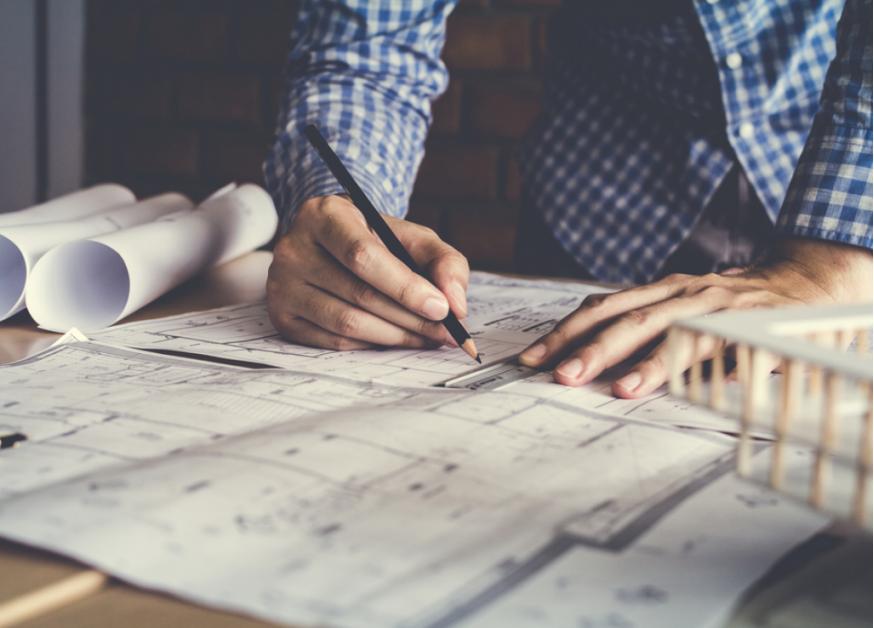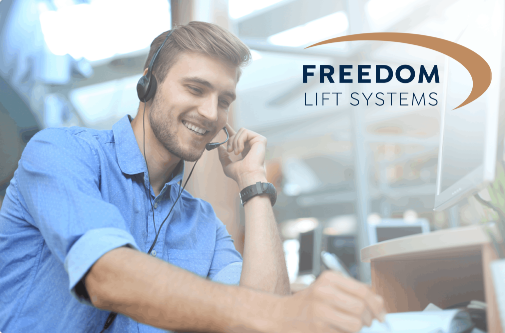FAQ about Wheelchair Platform Lifts
We get a lot of questions about wheelchair lifts and how to meet federal and regional code requirements. Read below to get answers for Frequently Asked Questons.

Please read the Commercial and Residential Lifts FAQ before ordering.
It is the CUSTOMERS responsibility to assure compliance with relevant building code and regulatory requirements.
Frequently Asked Questions:
-
Freedom Wheelchair lifts are designed to national standards for today's safety code requirements including the American Society of Mechanical Engineers (ASME) A18.1 for residential and commercial use.
There are nine different national codes that regulate the design and installation of vertical platform lifts in the U.S. Each state, and in some cases municipalities within a state, will follow one of the nine different codes and in many cases make changes and additions to the code. Thus code compliance varies from state to state, and within regions. Therefore all permits and installation requirements are the responsibility of the purchaser.
Only a local authorized building inspector or permit office can advise you on the requirements in your area. As they tend to be fluid and ever-changing, it is important to get pre-approval before purchasing any lift. We will do our best to help you meet any local code requirements, but you will need to do the leg work and find out what the requirements are.
We do our best to meet the broadest codes, but please review our specification sheets, installation guides and quotes to make sure they match what is needed before ordering.
-
The short answer is that we can configure a Freedom Platform Lift to meet any code requirement for residential or commercial vertical platform lifts and meet most individual inspector requirements. For a successful project follow these steps:
- Gather information on the project such as Building address, lifting height and lift configuration (scan a copy of the building plans).
- Email the building information to us and we will provide you with a technical specification drawing and info sheet of the model and configuration that we consider the best match for your project.
- Submit the drawings to the local elevator regulatory authority and discuss the application with them to determine if there are any additional requirements.
- Provide the inspectors requirements to us and we can then supply you with an appropriate lift quote.
-
Again, code compliance varies from state to state. Most areas have strict requirements about who can do the installation; almost all areas require a licensed contractor or even a Certified elevator technician/mechanic. Accessibility Professionals does not provide installation services, consultations, or installer recommendations for lifts.
-
Skilled installers can typically expect to take a minimum of 24-30 hours to complete a commercial lift installation, assuming that the site has been properly prepared (6’ x 6’ concrete pad or pit completed). The installation can take longer if the installers are not familiar with these products, or if site modifications are needed. Commercial lifts need to be hardwired into the building power, so an electrician may also need to be involved.
-
Platform lifts for commercial use typically requires certain added features to meet public or commercial building codes. Local inspectors or authorities may require more additions, but generally they include:
- An upper landing gate with an interlock, programmed to open only when the lift reaches the top landing.
- Carriage gate with interlock, programmed to open only when the lift reaches the lower landing.
- A solid platform with a safety plate, programmed to stop instantly if it comes in contact with any obstruction.
- Solid hand rail, across from the tower (or across from the entrance on an adjacent lift)
- Control wall extension, which provides a solid handrail on the tower side 18” toe plate ramp, to make entrance easier
- Emergency alarm and light package
- Keyed remote call/send stations, to call the lift to the rider if it’s at the opposite landing.
- For lifts traveling over 60”, commercial lifts must be installed in a fully enclosed shaft with full height doors at the upper and lower landing.
Residential Wheelchair Lifts may also need some added safety features to comply with local codes. For example some states require residential lfits to be ASME 18.1 compliant, and the Trus-T-Lifts will need to include an ASME package, which adds the following features:
- 18" toe plate
- Control wall extension
- Solid handrail
- Solid platform with safety pan
- Carriage gate
- Upper landing gate with keyed toggle
- Keyed toggle on lower landing
- Code plate
-
No. For the safety of possible users, it is extremely important to install a commercial wheelchair lift in any public or commercial building. You could be liable for any incidences causing injury, damage or death if you install a residential lift when a commercial wheelchair lift is required. Our commercial lifts have been designed to meet at least the minimum code and safety requirements for businesses, offices and public buildings, with added components to make sure our lifts are safe.
-
APEB wheelchair lifts have a 1 year limited warranty on parts
APFL Easy Ride wheelchair lifts have a 2 year limited warranty on parts (1 year warranty for outdoor lifts)
Visit this page for more detail: https://www.freedomliftsystems.com/terms-conditions
-
Portable lifts or temporary wheelchair lifts have been used in schools, churches and other public buildings to help meet the accessibility requirements. Since they are not fixed to the building, they do not fall under the same code requirements as permanent fixtures.
The intended use is for the Portable lift to be move in place for a specific need or event and returned to storage after that use, it is not intended to have the lift sit in one place for an extended period of time. You should not simply be looking for a way to avoid paying for permits, inspections, and other related costs for a commercial lift that will stay in one permanent location.
You still need to check with local requirements to make sure a portable wheelchair lift will pass inspection and the federal and local codes that you need to meet.
-
Our Freedom platform lifts can be used inside or outside. Lifts are made to withstand most weather conditions possible in North America. However depending on where it is located, it may require maintenance more frequently, for example lifts installed near the coast. We recommend that our Portable lifts only be used outside in dry conditions.
-
It is extremely important to not exceed the maximum weight capacity of your wheelchair lift (750lbs for Residential, Commercial and the Easy Ride Portable lift and 550lbs for 52" Portable lift). Wheelchair lifts are designed for an even load, and only intended for one rider and one wheelchair or mobility device. We recommend remote toggle call/send stations for each landing, so an attendant can send the rider up or down from either landing. Please check the specifications for platform size and weight capacity to make sure a Freedom wheelchair lift will work for your situation.
-
No, we do not rent wheelchair lifts or sell used lifts. We only sell new lifts that are manufactured for you once an order is placed. Check with local assisted living organizations for resources on possible rentals or a buy/sell community.
-
We currently cannot sell commercial wheelchair lifts into Ontario, Alberta, and Quebec. You will need to find an installer that is familiar with the TSSA or local requirements for commercial wheelchair lifts. https://www.tssa.org/en/elevating-devices/elevating-devices.aspx


 My Account
My Account  1-877-947-7769
1-877-947-7769